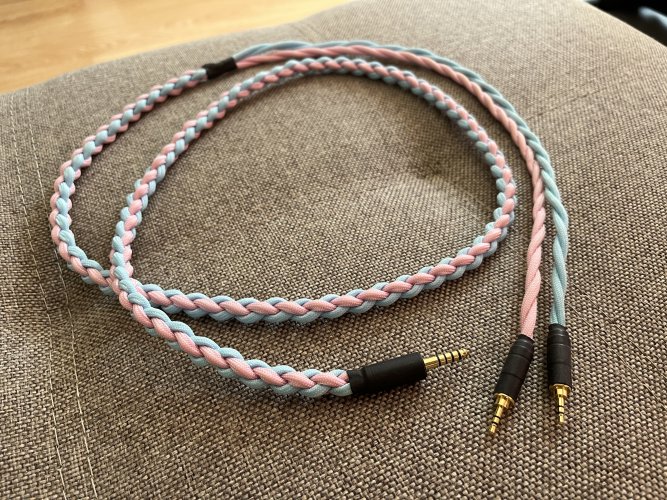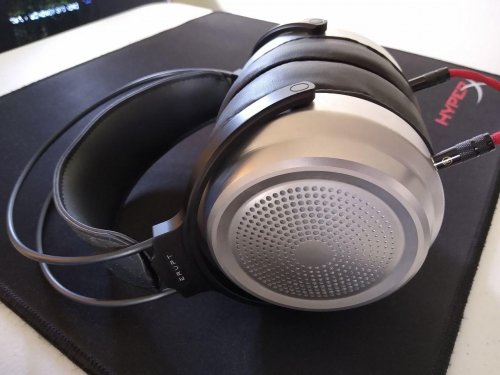Max_Settings
Head-Fier
Hello. I see a few people here speaking about me and I thought I would just give a little bit of a breakdown of my review philosophy.
The reason I really started reviewing is that I saw a hole in the Youtube review space. You see, most review are done for people looking for purchase confirmation; they bought something and want someone to tell them that it is good. That is not me. I am not going to lie to you and tell you that what you bought is good, when I don't feel that it is. This is not being overly negative, I just give my 100% honest impressions on the item. Other reviewers come at a review from the idea that the item starts off with 100 points and every thing that it does wrong is points off. I do my reviews from the other perspective. With me you start off with 0 points and everything you do well earns you points.
In my opinion I see the community way to accepting of obvious flaws with many headphones. I am not scared to be the person that points out these flaws. Even headphones that I love I will always point out something that do poorly and something that I dislike about them, this is only fair. As I mentioned above, I believe being forgiving on products is harmful to the market as it does not pressure manufacturers to fix the flaws in their products. Being constrictive and offering real feedback shows them where they have areas to improve. I am not worried about companies not wanting to send me something for fear of a negative review. I will not allow a company to censor me from me true thoughts. As I think someone mentioned in a deleted post I do get more dislikes that other reviewers. This is not because of my "negative attitude" as he implied. As I stated, I am not here to give you confirmation bias, which is what most people are looking for. When someone is willing to stand up and be truthful, often they will be hated for that. I fully expect to get people that disagree with me, but as I said you have to be willing to admit the flaws in a piece of gear.
I also do not and will not ever use affiliate links, nor will I ever accept money for reviews. I am not here to be a salesman. Using affiliate links in my opinion means you cannot have an unbiased review. Having a monetary gain for saying a product is good gives you a reason to be more forgiving or push it. This is why I will never use affiliate links. I have no incentive to push something and nothing to loose for reviewing something negatively. No monetary gain or loss means no inherent bias in any of my reviews.
No as for comments of me being aggressive and unprofessional. I don't know what world you are living in where you would consider "ouch" "sadly" "wasteful" etc... overly aggressive terms. But I digress. Also when I said it fakes its' soundstage, this is a very common tactic used where you dip out your mid range to try and create a sense of space. I explained in the video exactly how this works.
Now as for me being more unprofessional than Zeos, I will just say I have never in any of my reviews opened by saying "This headphone is a steaming pile of horse crap" I have never flipped off a company in my videos. I don't have figurines of underage girls all around. I have never started cursing out a company and starting banging headphones on the table in rage. So I digress take that as you will.
The reason I really started reviewing is that I saw a hole in the Youtube review space. You see, most review are done for people looking for purchase confirmation; they bought something and want someone to tell them that it is good. That is not me. I am not going to lie to you and tell you that what you bought is good, when I don't feel that it is. This is not being overly negative, I just give my 100% honest impressions on the item. Other reviewers come at a review from the idea that the item starts off with 100 points and every thing that it does wrong is points off. I do my reviews from the other perspective. With me you start off with 0 points and everything you do well earns you points.
In my opinion I see the community way to accepting of obvious flaws with many headphones. I am not scared to be the person that points out these flaws. Even headphones that I love I will always point out something that do poorly and something that I dislike about them, this is only fair. As I mentioned above, I believe being forgiving on products is harmful to the market as it does not pressure manufacturers to fix the flaws in their products. Being constrictive and offering real feedback shows them where they have areas to improve. I am not worried about companies not wanting to send me something for fear of a negative review. I will not allow a company to censor me from me true thoughts. As I think someone mentioned in a deleted post I do get more dislikes that other reviewers. This is not because of my "negative attitude" as he implied. As I stated, I am not here to give you confirmation bias, which is what most people are looking for. When someone is willing to stand up and be truthful, often they will be hated for that. I fully expect to get people that disagree with me, but as I said you have to be willing to admit the flaws in a piece of gear.
I also do not and will not ever use affiliate links, nor will I ever accept money for reviews. I am not here to be a salesman. Using affiliate links in my opinion means you cannot have an unbiased review. Having a monetary gain for saying a product is good gives you a reason to be more forgiving or push it. This is why I will never use affiliate links. I have no incentive to push something and nothing to loose for reviewing something negatively. No monetary gain or loss means no inherent bias in any of my reviews.
No as for comments of me being aggressive and unprofessional. I don't know what world you are living in where you would consider "ouch" "sadly" "wasteful" etc... overly aggressive terms. But I digress. Also when I said it fakes its' soundstage, this is a very common tactic used where you dip out your mid range to try and create a sense of space. I explained in the video exactly how this works.
Now as for me being more unprofessional than Zeos, I will just say I have never in any of my reviews opened by saying "This headphone is a steaming pile of horse crap" I have never flipped off a company in my videos. I don't have figurines of underage girls all around. I have never started cursing out a company and starting banging headphones on the table in rage. So I digress take that as you will.
Last edited:
































































